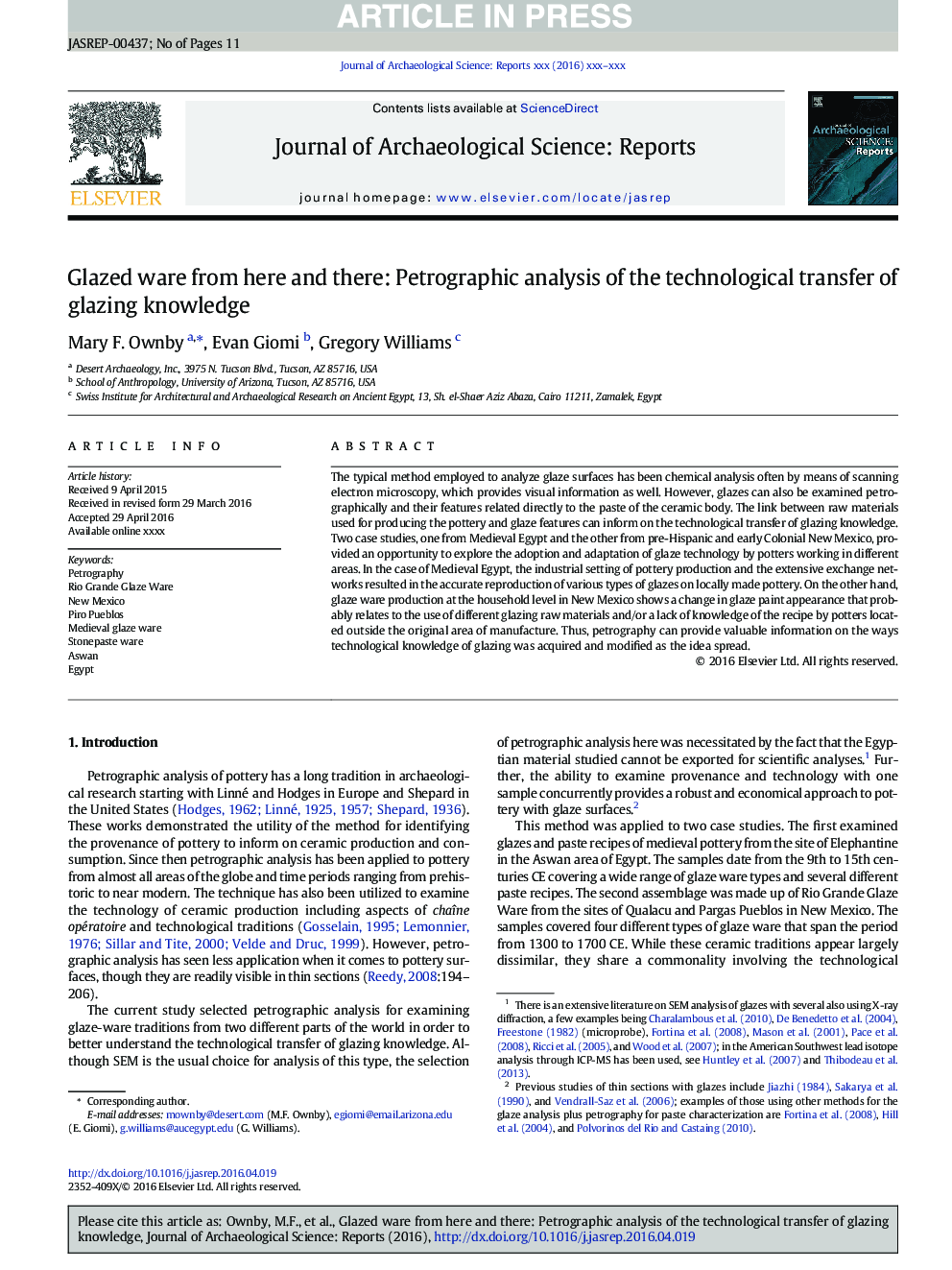| Article ID | Journal | Published Year | Pages | File Type |
|---|---|---|---|---|
| 7445036 | Journal of Archaeological Science: Reports | 2017 | 11 Pages |
Abstract
The typical method employed to analyze glaze surfaces has been chemical analysis often by means of scanning electron microscopy, which provides visual information as well. However, glazes can also be examined petrographically and their features related directly to the paste of the ceramic body. The link between raw materials used for producing the pottery and glaze features can inform on the technological transfer of glazing knowledge. Two case studies, one from Medieval Egypt and the other from pre-Hispanic and early Colonial New Mexico, provided an opportunity to explore the adoption and adaptation of glaze technology by potters working in different areas. In the case of Medieval Egypt, the industrial setting of pottery production and the extensive exchange networks resulted in the accurate reproduction of various types of glazes on locally made pottery. On the other hand, glaze ware production at the household level in New Mexico shows a change in glaze paint appearance that probably relates to the use of different glazing raw materials and/or a lack of knowledge of the recipe by potters located outside the original area of manufacture. Thus, petrography can provide valuable information on the ways technological knowledge of glazing was acquired and modified as the idea spread.
Keywords
Related Topics
Social Sciences and Humanities
Arts and Humanities
History
Authors
Mary F. Ownby, Evan Giomi, Gregory Williams,
